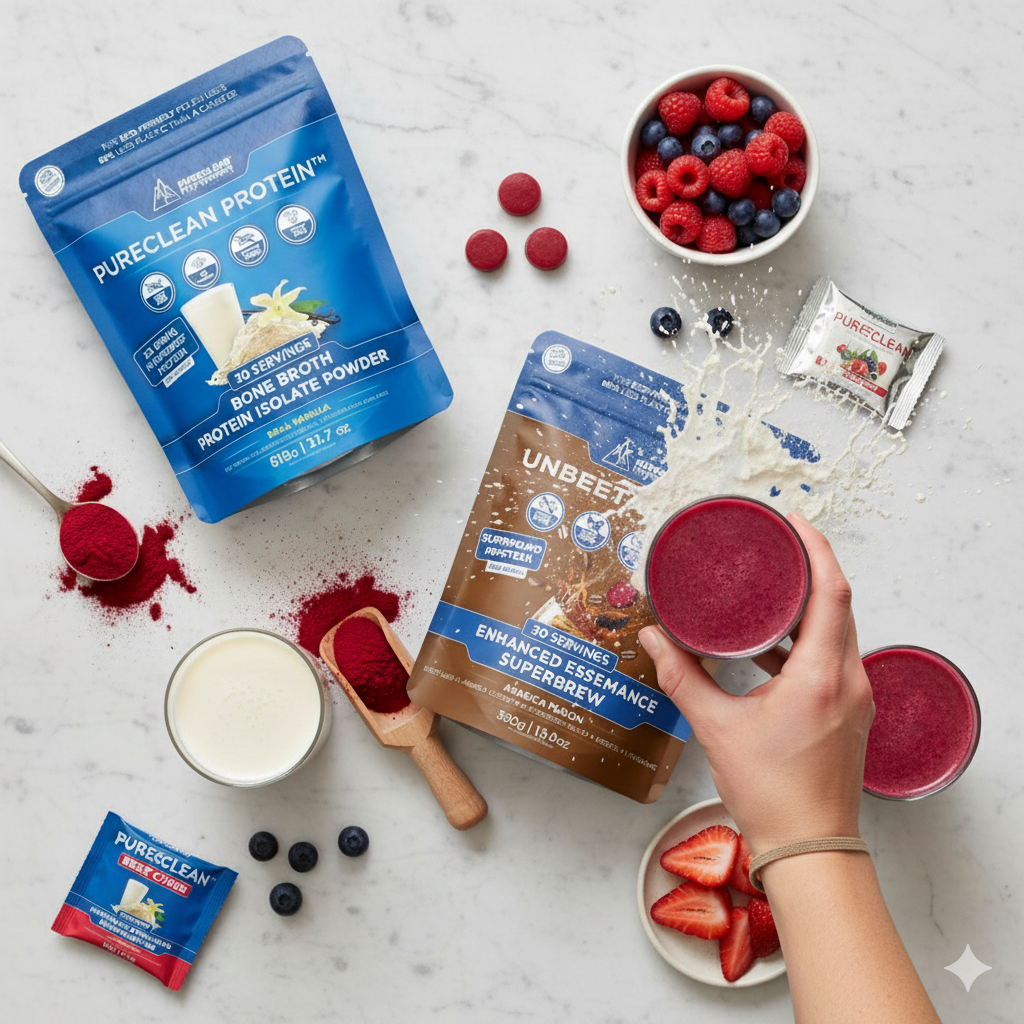
Why You “Don’t Have To” Eat Vegetables or Beans (And How To Do It Safely If You Choose Not To)
You can run a metabolically strong, resilient terrain without relying on vegetables or beans as staples. That sentence triggers people because it breaks nutrition dogma. In a terrain-first model, the question isn’t “what does the pyramid say,” it’s “what inputs stabilize your signals with the fewest tradeoffs?” Some users experience downsides from specific plant defenses, modern growing practices, or prep methods, and do better emphasizing fruits, animal nose-to-tail, and clean proteins. If you like vegetables and legumes and they treat you well, keep them. If you don’t, here’s how to structure the diet so nothing critical is missing—and how to re-introduce them intelligently if desired.
The Terrain Case For “Optional” Vegetables And Beans
Signal stability over food ideology. Oxalates, some lectins, select FODMAP carbohydrates, and goitrogen exposure can be non-issues for many, and highly provocative for others. When these collide with poor light hygiene, circadian drift, pesticides, or depleted soils, the net signal is destabilizing. In that context, minimizing problematic plant inputs can reduce noise quickly.
Nutrients aren’t exclusive to vegetables. Preformed vitamin A (retinol), vitamin B12, heme iron, zinc, and vitamin D are inherently richer or more bioavailable in animal foods. Fat-soluble vitamins present in plants require fat to absorb—so the animal foods you pair them with often do the heavy lifting. If you choose fewer vegetables, you’re not inherently nutrient-deficient; you just need to design the plate with intention.
Legumes are calorie-dense, prep-sensitive, and individualized. Traditional methods—soak, sprout, ferment, thorough cook—reduce several irritants but don’t eliminate all issues for all people. Many restaurant and packaged versions skip these steps, raising the mismatch risk for sensitive users.
How To Cover Nutrients If You Minimize Vegetables And Legumes
Anchor on nose-to-tail. Prioritize ruminant muscle meat, collagenous cuts, shellfish, and liver. A practical stack is grass-fed beef, sardines or oysters, and 2–3 ounces of beef liver weekly. For convenience, use PureClean Protein™ to combine complete and collagen proteins in one, and add FundAminos™ to guarantee essential amino coverage without extra calories.
Leverage fruit as the preferred plant input. From a biological-design lens, fruit “wants” to be eaten. It’s typically lower in plant defense compounds and carries polyphenols, vitamin C, potassium, and fiber with less GI friction for many. Use mixed berries and citrus in smoothies with ChocoBerry Blast™ when you want a dense polyphenol hit without vegetable roughage.
Use targeted nitric-oxide support without leafy bulk. If greens bloat you, you can still support NO with beet formulas. PureClean Beet™ and UnBeetABrew™ provide dietary nitrate and betalains with excellent tolerability for most users.
Honey as optional adjunct. Small amounts around training or in evening tea can support adherence and recovery; keep it responsive to glucose tolerance and goals.
If You Do Include Vegetables Or Beans, Make Them Low-Friction
Choose gentler plants first. Many tolerate water-rich options—sea vegetables, bok choy, lettuces—better than dense brassicas when GI is reactive. Nightshades and high-FODMAP veggies are fine if you personally tolerate them; when in doubt, test one at a time and track terrain signals the next morning.
Cook smarter. Thorough cooking reduces several lectins and goitrogenic compounds; pair with traditional fats for vitamin absorption. If using legumes, soak, sprout, and pressure-cook; re-assess tolerance after changing prep, not just after changing the food.
Mind dose and timing. Small, cooked servings with protein and fat are very different terrain inputs than large raw salads or all-day grazing. If sleep, HR drift, bloating, or cravings worsen, cut serving size first before eliminating entirely.
Common Objections, Answered Directly
“Isn’t this anti-vegetable?” No. It’s anti-dogma. Vegetables are useful tools for many; they’re not mandatory for everyone. The terrain decides.
“What about fiber?” You can reach effective fiber and short-chain fatty acid support with fruit skins, cooked-and-cooled starches (if tolerated), collagen-rich cuts, and fermented foods, without relying on large volumes of raw veg.
“Isn’t plant diversity always better for the microbiome?” Diversity matters, but so does symptom-free tolerance. Forced diversity that inflames your gut is a net negative. Expand variety once signals stabilize.
Simple Daily Pattern Without Vegetables Or Beans
First meal within 30–60 minutes of light exposure. Eggs or ruminant protein; add collagen or PureClean Protein if time-crunched. Include fruit if you perform or recover better with carbs.
Midday protein anchor. Ruminant meat or fish; add PureClean Beet or a cup of UnBeetABrew for nitric-oxide and focus without leafy bulk.
Evening simplicity. Collagen-rich cut or bone broth; optional fruit. If sweet signals spike at night, a square of BeetUMs™ with tea can blunt the craving loop.
When Minimizing Vegetables And Legumes Is A Bad Idea
When you’re using restriction to mask under-eating protein or calories. The goal is stability and resilience, not austerity. If energy, training performance, cycle regularity, or sleep degrade, increase protein and total intake first.
When your only “why” is ideology. Field-aware choices are measured by signals, not tribes. If certain cooked vegetables improve your bowel regularity, blood pressure, or training recovery, keep them.
Putting It In Practice
Start with a two-week trial emphasizing ruminant proteins, shellfish, eggs, fruit, and organ meats, plus targeted beet support. Track morning HR, breath-hold/BHI, bloat, cravings, sleep continuity, and mood. If signals improve, you’ve found a lower-friction pattern. If you miss certain vegetables or beans, reintroduce one at a time, cooked, in small portions with fat and protein, and observe the next-day readouts.
Stock the terrain-friendly anchors: PureClean Protein™ · FundAminos™ · PureClean Beet™ · UnBeetABrew™ · ChocoBerry Blast™ · BeetUMs™
More terrain guides: Ask Dr. Cohen Series
